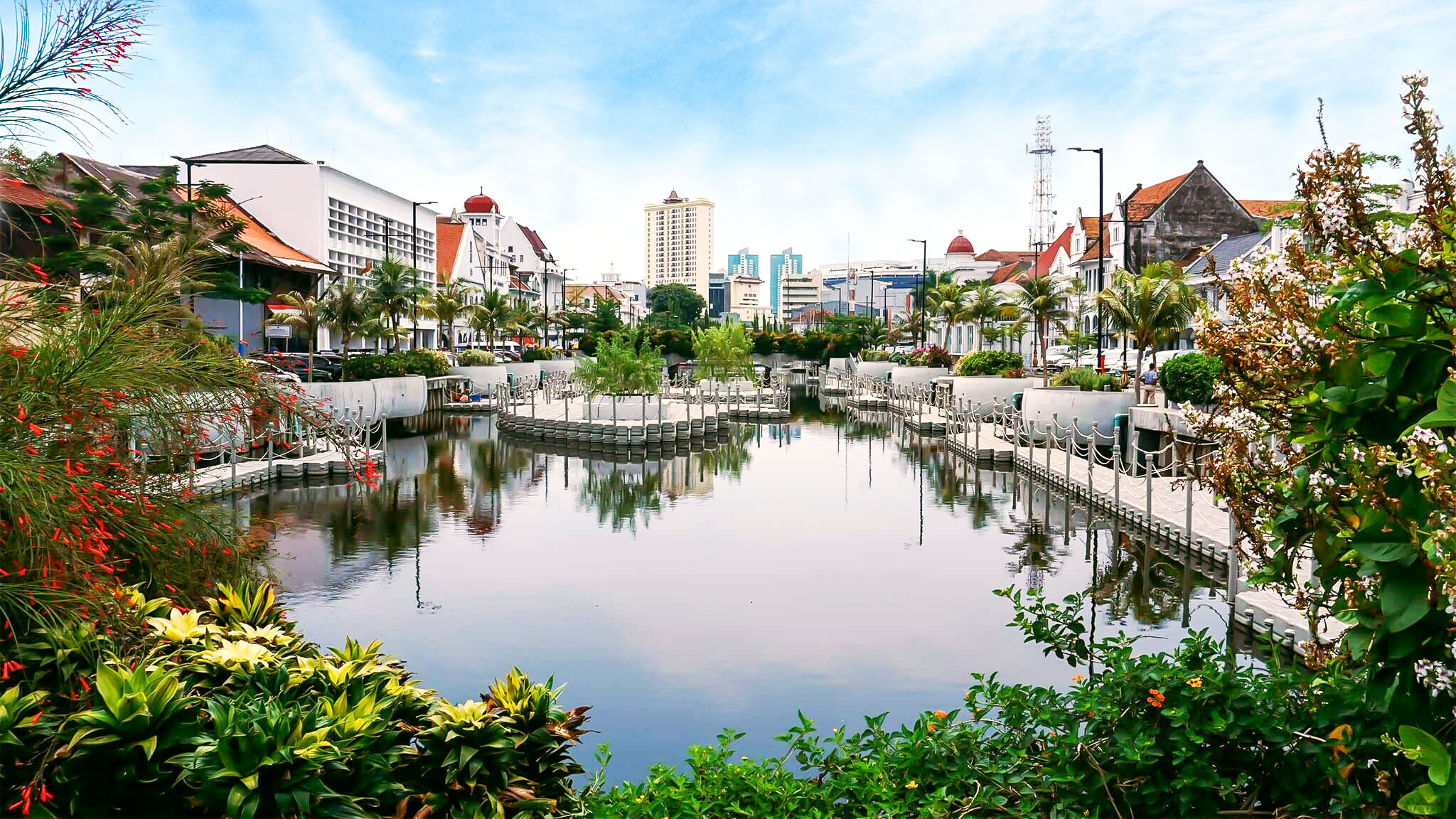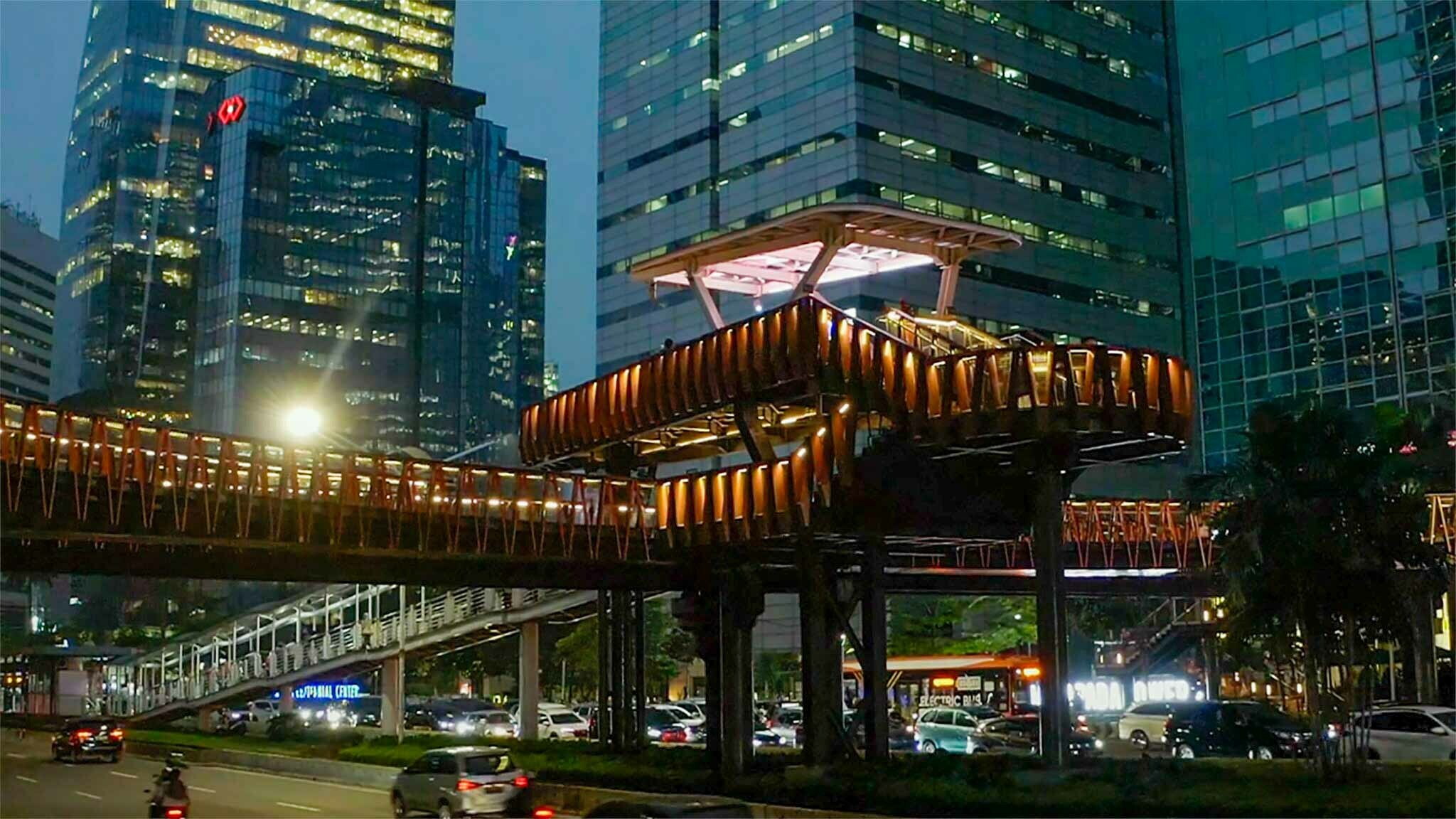
Experience Jakarta,
the Jewel of Asia
There’s plenty of sun, sea, and sand in Bali and Lombok, but to enjoy a different side of Indonesia, visit Jakarta.
Many visitors to Indonesia consider Jakarta a gateway to the country—a quick pit stop before heading to one of the nation’s 17,000 islands such as Bali, Lombok, or Komodo. While the allure of the archipelago’s many islands cannot be denied, travelers who wish to enjoy more heritage, architecture, and culture, will find there’s more of everything to enjoy in Jakarta.

In the 16th century, the city was the capital of the Dutch East Indies and epicenter of the Dutch trading empire in Asia. Today, the Indonesian capital is home to over 10 million, making it one of the world’s busiest megacities. Start your exploration in the heart of Jakarta—Old City Batavia (known locally as Kota Tua or Batavia, as Jakarta was formerly called) where several well-preserved colonial buildings still stand, easily reachable thanks to the recent integration between TransJakarta bus and Commuterline rail systems. At its center is Fatahillah Square, where recent regeneration has transformed the area into a Low Emission Zone with wide, accessible streets and open-air spaces to enjoy the old town square.
Housed in the former City Hall on the north side of the square, the Jakarta Historical Museum brings visitors on a journey through the city’s colonial past. You can visit two additional museums on either side of this historic building—the Wayang Museum, dedicated to traditional Javan puppetry, and the Fine Art & Ceramic Museum. For a different taste of the country’s heritage, nearby Café Batavia offers refined takes on traditional flavors amidst the grandeur of the original Dutch East India Company building.
Visitors can learn more about the city through its architecture, from monuments steeped in history to modern structures that punctuate the skyline. Towering over Merdeka Square, the 433-foot tall National Monument (also known as Monas) symbolizes the fight for Indonesia, with reliefs telling the history from ancient empires through to the nation’s independence.
Nearby, visit the Istiqlal Mosque, the largest mosque in Southeast Asia built to commemorate Indonesia’s independence in 1945 and designed by Friedrich Silaban, a non-Muslim Bataknese architect. Directly across the Javanese marble-clad mosque, and highlighting the city’s religious diversity, stands Jakarta Cathedral, a neo-gothic structure with a small museum on the upper floor.
One of the newest additions to the city skyline is Jakarta International Stadium, inaugurated in 2022 as the largest soccer-specific stadium in Asia. On the rooftop, the Sky View Deck is open to the public and offers views across the city and out to the sea.



In Jakarta, an unforgettable meal is never too far away thanks to the city’s vast culinary options. For traditional street food, explore Sabang Street, where vendors offer a range of dishes including the ubiquitous nasi goreng (fried rice), satay (meat on skewers), and bakso (Indonesian meatball soup).
On the higher end of the scale are fine dining restaurants such as Tugu Kunstkring Paleis, where diners can enjoy the grand “Rijsttafel Betawi”, a feast styled after the culinary celebrations hosted by Dutch plantation owners and enlivened by music and dance performances. Around the 1940s when it housed the Fine Arts Circle of the Dutch East Indies, the building exhibited works by Van Gogh, Picasso, Gauguin, and Chagall, a tradition it is continuing with an art gallery on the upper floor above the restaurant.
To explore Jakarta’s burgeoning art scene, visit Modern and Contemporary Art in Nusantara (MACAN), a museum which celebrates both contemporary Indonesian and international creativity, or the multidisciplinary Salihara Arts Center, home to a theater space and gallery, with priority given to emerging artists.
For a reprieve from the pace of the city, head to the marina at Ancol, the starting point for day trips to Seribu Archipelago (meaning Thousand Islands), home to a national marine park. Located less than 30 minutes away by speedboat, Bidadari Island is home to mangrove forests and beaches, where guests can relax and take in views of Jakarta from across the bay.
Remnants of Jakarta’s colonial past can also be seen on some of the islands in this archipelago, including Onrust Island, site of a former Dutch shipyard with ancient fortifications, and on nearby Cipir Island, where ruins of an ancient infirmary and prison still stand.


Distinct
Neighborhoods
Jakarta covers an area of over 660 square kilometers and is divided into six main districts, each with their own unique activities and attractions. For culture, Central Jakarta places visitors within walking distance of the city’s most notable colonial buildings in Kota Tua, while Menteng is home to some of the city’s best shopping, including Grand Indonesia Mall, Plaza Indonesia, the newly refurbished Sarinah Department Store, as well as Jalan Surabaya, an antique and flea market.
Visitors looking to enjoy the local nightlife should consider staying downtown in the SCBD (Sudirman Central Business District) in South Jakarta, which in recent years has seen improvements to its pedestrian friendliness—including the renovation of Phinisi pedestrian bridge (JPO), bicycle crossing bridge (JPS), and Kendal Tunnel, the latter now a gathering spot for trendy youth—and the addition of 6.96-mile (11.2-kilometer) bicycle lanes from Sudirman Road to MH Thamrin Road. Guests staying in the SCBD also enjoy close access to Tebet Eco Park, a revamped inner-city oasis and community garden which reopened in 2022 with a beautiful infinity link bridge and children’s play area.
Jakarta offers a rich melting pot of culture and cuisine with an engaging menu of historical, natural, artistic, and leisure attractions for travelers to experience and enjoy. The Indonesian capital is also a designated “Kota Kolaborasi” (City of Collaboration), with the government working alongside locals for continuous revitalization and creating a dynamic destination that truly deserves its moniker, the














